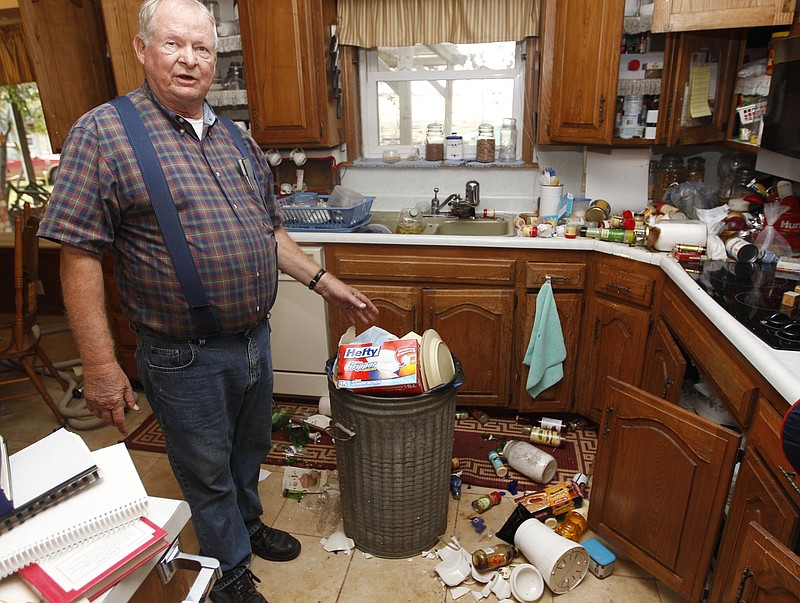SPARKS, Okla. (AP) - Clouds of dust belched from the corners of almost every room in Joe Reneau's house as the biggest earthquake in Oklahoma history rocked the two-story building.
A roar that sounded like a jumbo jet filled the air, and Reneau's red-brick chimney collapsed and fell into the roof above the living room. By the time the shaking stopped, a pantry worth of food had been strewn across the kitchen and shards of glass and pottery covered the floor.
"It was like WHAM!" said Reneau, 75, gesturing with swipes of his arms. "I thought in my mind the house would stand, but then again, maybe not."
The magnitude 5.6 earthquake and its aftershocks still had residents rattled Sunday. No injuries were reported, and aside from a buckled highway and the collapse of a tower on the St. Gregory's University administration building, neither was any major damage. But the weekend earthquakes were among the strongest yet in a state that has seen a dramatic, unexplained increase in seismic activity.
Oklahoma typically had about 50 earthquakes a year until 2009. Then the number spiked, and 1,047 quakes shook the state last year, prompting researchers to install seismographs in the area. Still, most of the earthquakes have been small.
Saturday night's big one sent Jesse Richards' wife running outside because she thought their home was going to collapse. The earthquake centered near their home in Sparks, 44 miles northeast of Oklahoma City, could be felt throughout the state and in Arkansas, Kansas, Missouri, northern Texas and some parts of Illinois and Wisconsin. Richards estimated it lasted for as much as a minute. One of his wife's cookie jars fell on the floor and shattered, and pictures hanging in their living room were knocked askew.
"We've been here 18 years, and it's getting to be a regular occurrence," said Richards, 50. But, he added, "I hope I never get used to them."
Geologists now believe a magnitude 4.7 earthquake Saturday morning was a foreshock to the bigger one that followed that night. They recorded 10 aftershocks by midmorning Sunday and expected more. Two of the aftershocks, at 4 a.m. and 9 a.m., were big, magnitude 4.0.
"We will definitely continue to see aftershocks, as we've already seen aftershocks from this one," said Paul Earle, a seismologist with the U.S. Geological Survey in Golden, Colo. "We will see aftershocks in the days and weeks to come, possibly even months."
Scientists say they have no explanation for the quakes. They happened along an ancient fault, although it's not clear yet whether shifting along the fault is what caused them, Earle said. One reason earthquakes are hard to predict in Oklahoma is that the state sits over a series of smaller ancient faults, rather than a major fault, such as California's San Andreas Fault, he said.
Arkansas also has seen a big increase in earthquake activity, which residents have blamed on injection wells. Natural gas companies engaged in hydraulic fracturing, or fracking, use fluid to break apart shale and rock to release natural gas. Injection wells then dispose of the fluid by injecting it back into the ground.
There are 181 injection wells in the Oklahoma county where most of the weekend earthquakes happened, said Matt Skinner, spokesman for the Oklahoma Corporation Commission, which oversees oil and gas production in the state and intrastate transportation pipelines.
But natural gas companies claim there is no proof of a connection between injection wells and earthquakes, and a study released earlier this year by an Oklahoma Geological Survey seismologist seems to back that up. It found most of the state's seismic activity didn't appear to be tied to the wells, although more investigation was needed. The state survey didn't respond to phone messages left Sunday.
Earle said he couldn't comment on the relationship between fracking, injection wells and earthquakes.

